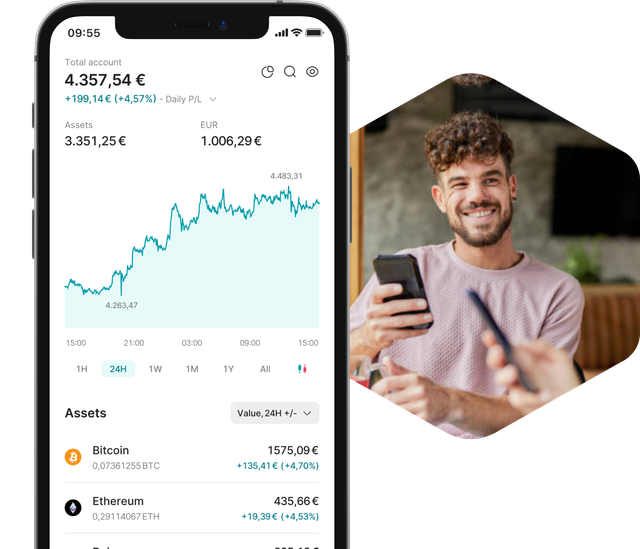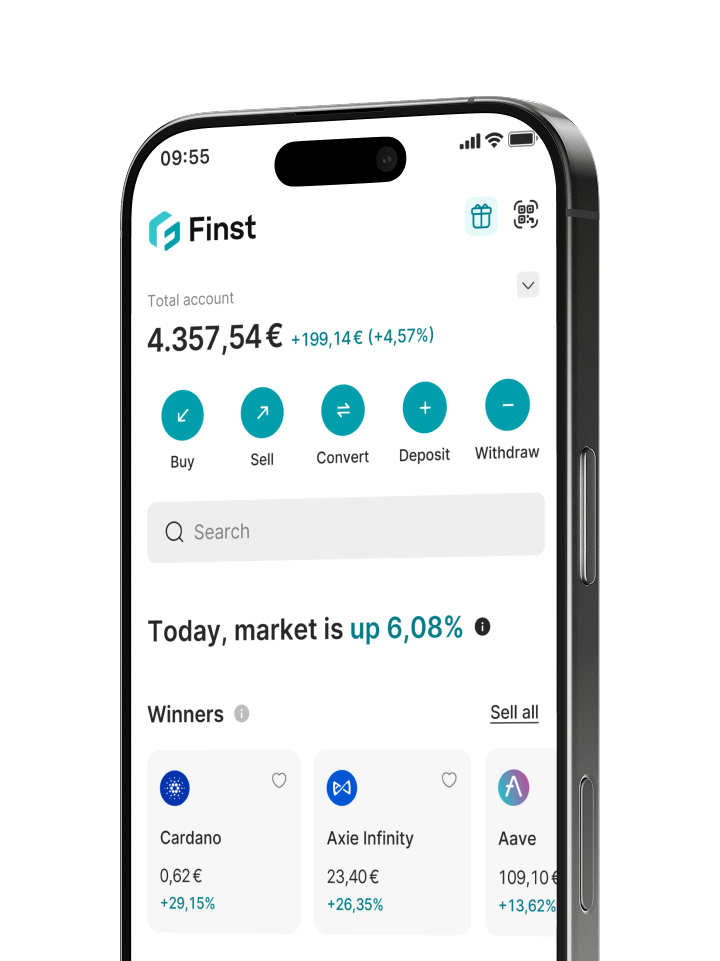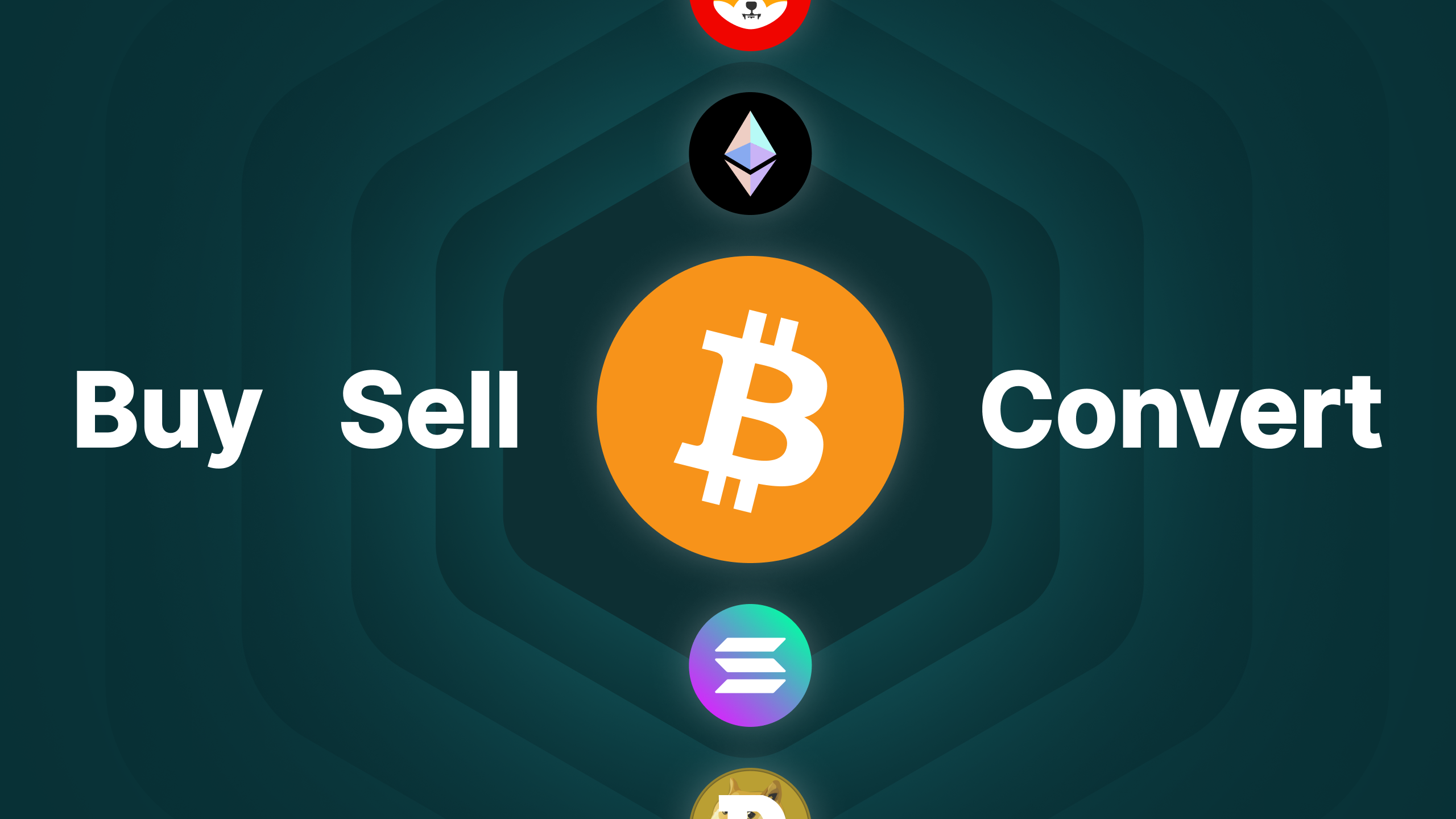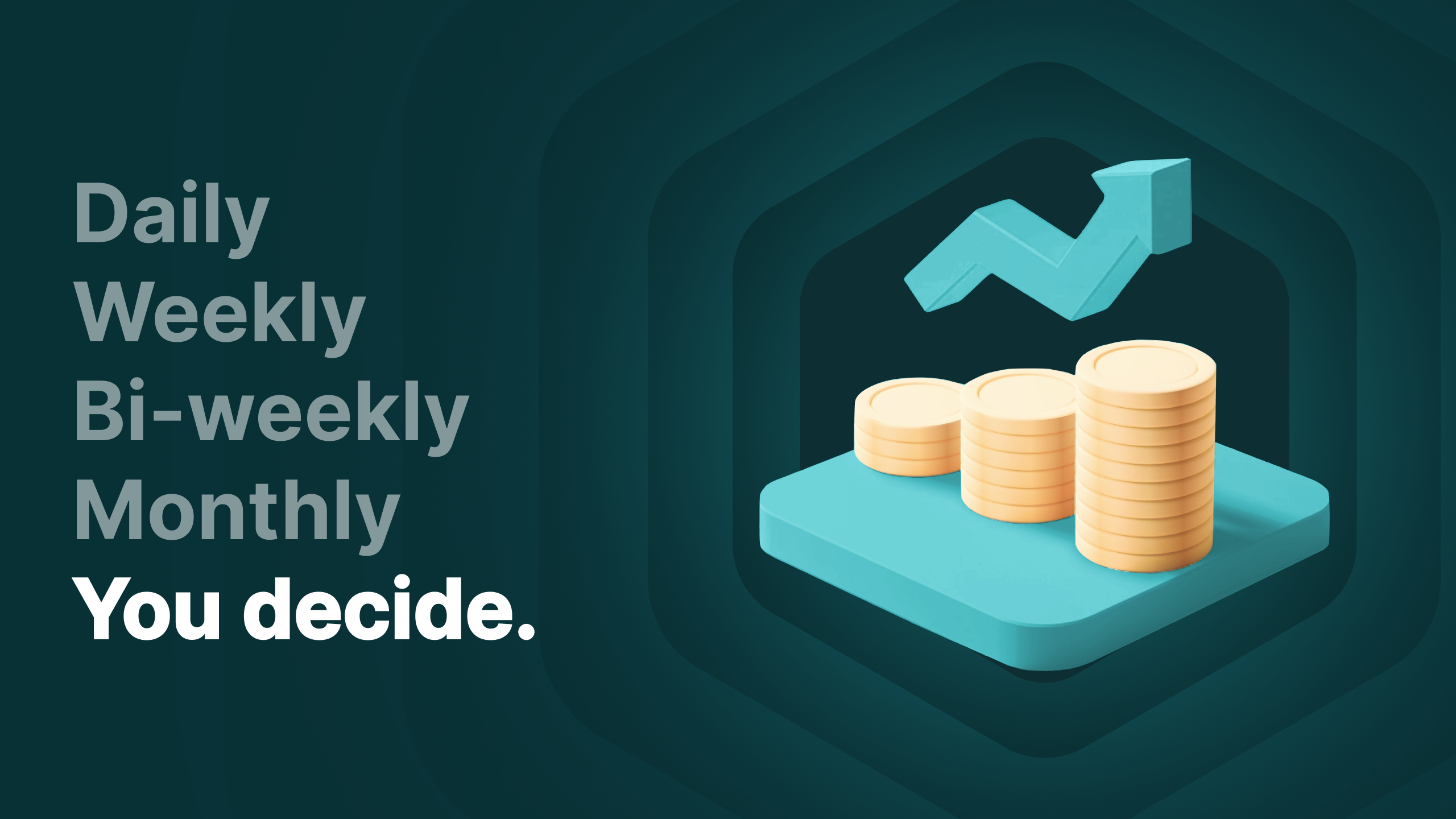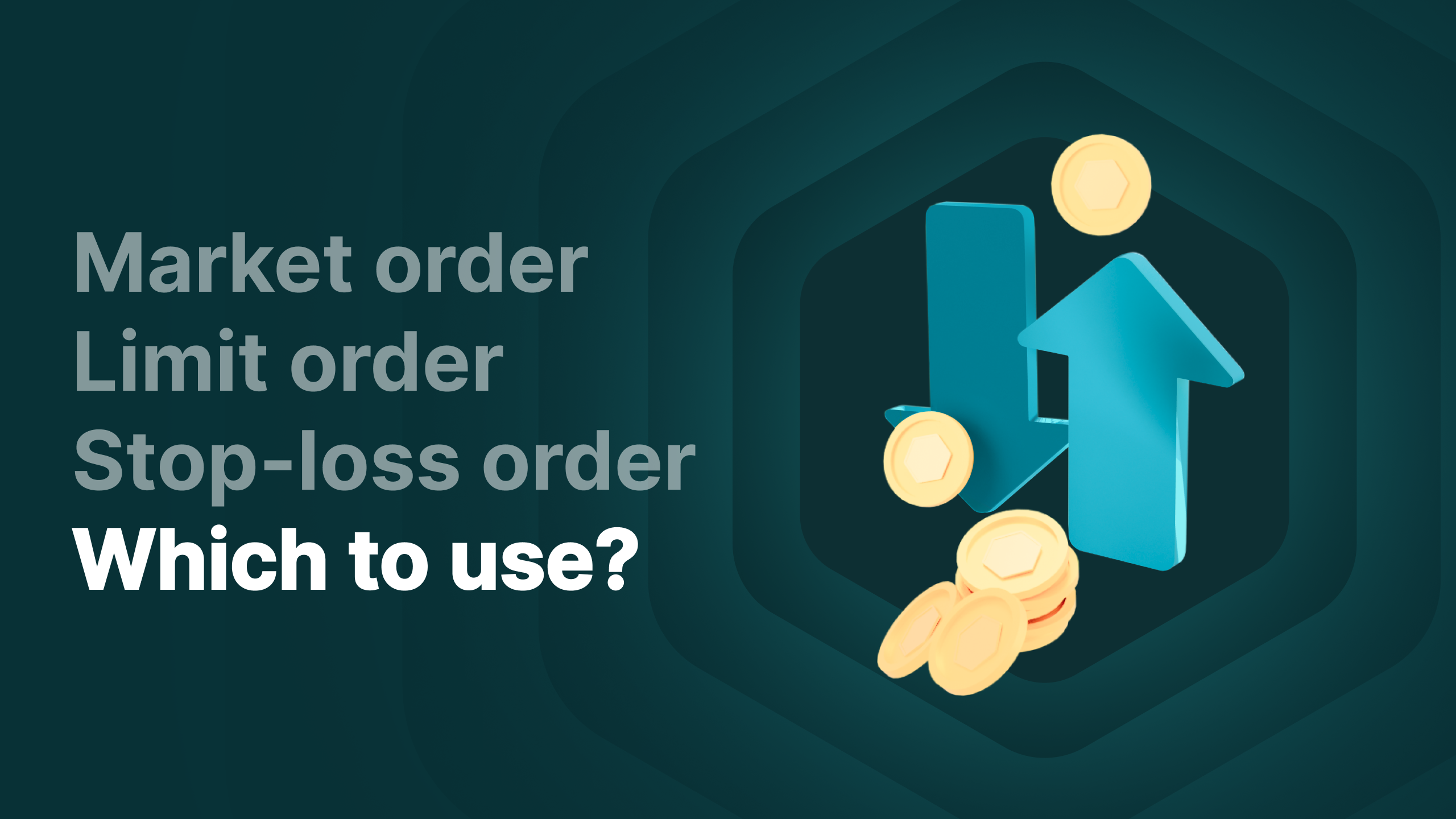-
How to buy Solana?
Follow the steps below to easily and securely buy Solana.
- Sign up
Create an account with a reputable crypto platform like Finst.
- Deposit EUR
Deposit Euros using payment methods like iDEAL, Bancontact, or SEPA.
- Start investing
Buy Solana and securely store it on our platform.
-
Can I automatically invest in Solana on a recurring basis (DCA)?
Yes, with Auto Invest, you can set up daily, weekly, bi-weekly, or monthly purchases of your favorite crypto using the Dollar Cost Averaging (DCA) strategy. Create your own investment plan and DCA Solana without any action required or additional fees.
Do you prefer to store your crypto on your external wallet? At Finst, we have various cryptocurrencies enabled for automatic withdrawals, which are sent straight to your wallet after each recurring purchase.
-
What fees do I need to pay when buying Solana?
When you buy Solana through Finst, you benefit from ultra-low trading fees of 0,15% per transaction.
Any fees you may encounter when trading crypto are clearly shown for every transaction on our platform.
It's important to note that network fees are outside of our control, as they are determined by the blockchain networks themselves.
This means that while network fees may vary depending on the blockchain and current demand, our trading fee remains consistent, helping you better manage your transaction costs.
-
Which order types can I use to buy Solana?
At Finst, we support several order types to buy Solana: Market Order, Limit Order, and Auto Invest (DCA).
- With a Market Order, you buy Solana instantly at the best available market price.
- Do you want to buy Solana at a lower price? With a Limit Order, you set the maximum price you're willing to pay for Solana. Your order will be executed once your limit price is reached on the market.
- Do you want to invest in Solana without constantly checking the market? With Auto Invest, you can schedule automatic and recurring purchases. Whether you want to buy daily, weekly, bi-weekly, or monthly - you choose the frequency.
-
Can I use limit order to buy Solana?
Yes, on our platform, you can easily buy Solana with a Limit Order. This allows you to set the maximum price you're willing to pay. Your order will be executed once the price of Solana reaches your limit price or lower.
A Limit Order is ideal if you want to wait for a better price without constantly monitoring the market.
-
Is it safe to buy Solana?
Yes, it is safe to buy Solana through Finst. We are authorized as a crypto-asset service provider by the Dutch Authority for the Financial Markets (AFM) (no. 41000015), and we are the first and only Dutch crypto platform that successfully obtained a Proof of Reserves (PoR) from an independent and reputable audit firm (Audit Now). At Finst, your assets are segregated and held on a 1:1 basis, plus reserves.
-
Is it legal to buy Solana?
Yes, buying Solana is legal in Europe. However, we advise you to do your own research before making a purchase.
-
Can I buy Solana anonymously?
No, due to laws and regulations, it is not possible to buy Solana or other cryptocurrencies anonymously on a regulated crypto platform in Europe.
-
Can I buy Solana with iDEAL?
Yes, at Finst, you can easily buy Solana with iDEAL. We also support popular payment methods like SEPA and Bancontact.
-
Do you have to buy one Solana?
At Finst, you can start investing in Solana with as little as €1. For many coins, it is not necessary to buy a whole coin.
-
What are the risks of investing in Solana?
Investing in cryptocurrencies like Solana involves risks of losses. You can lose (part of) your deposit. Before you decide to buy Solana, it is important to understand the risks.
Volatility: The price of Solana can fluctuate significantly. This means that its value can rise and fall quickly.
No guaranteed profit: Previous price increases do not guarantee future returns. Therefore, only invest money that you can afford to lose.
External factors: The price of Solana is influenced by external factors, such as economic conditions and the actions of influential individuals, governments, and institutions. These factors can have a positive or negative impact on the price.
-
How to store Solana?
You can securely store your Solana in your Finst wallet. Some cryptocurrencies also support external wallets, allowing you to send your crypto to your own wallet if desired. We use state-of-the-art security measures to keep you and your crypto safe.
We work with Fireblocks, one of the most trusted crypto security infrastructure providers, to safely store your Solana. They make use of Multi-Party Computation (MPC) technology which is an advanced cryptographic technology used to protect your digital assets.
Additionally, Finst is the first and only Dutch crypto platform that has successfully conducted an extensive Proof of Reserves (PoR) audit. With Finst, your assets are segregated and held on a 1:1 basis, plus reserves.
-
Can I send my Solana to an external wallet?
Yes, you can send your Solana to an external wallet. With Finst, you can easily send your Solana to a hardware or a software wallet.
-
Can I store Solana on a hardware wallet?
Yes, you can store Solana (SOL) on hardware wallets such as Ledger or Trezor.
-
Can I stake my Solana?
Yes, at Finst, you can stake SOL and earn passive income on your coins while contributing to the security of the network.
